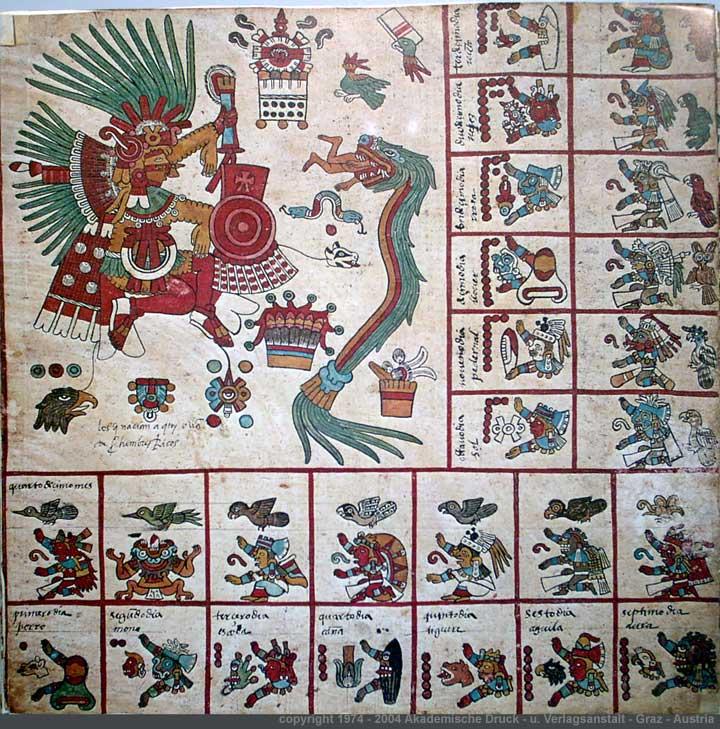Codex Borbonicus



The Codex Borbonicus is a codex written shortly before or after the Spanish invasion of Mexico. It is named after the Palais Bourbon in France and kept at the Bibliothèque de l'Assemblée Nationale in Paris.
The Codex Borbonicus is a single 46.5 foot (14.2 m) long sheet of amatl paper, in accordion folding style. The first section is one of the most intricate surviving divinatory calendars (or tonalamatl). Each page represents one of the 20 trecena (or 13-day periods), in the tonalpohualli (or 260-day year). Most of the page is taken up with a painting of the ruling deity or deities, with the remainder taken up with the 13 day signs of the trecena and 13 other glyphs and deities.
With these 26 symbols, the priests were able to create horoscopes and divine the future. The first 18 pages of the codex (all that remain of the original 20) show considerably more wear than the last sections, very likely indicating that these pages were consulted more often.
The second section of the codex documents the Mesoamerican 52 year cycle, showing in order the dates of the first days of each of these 52 solar years. These days are correlated with the nine Lords of the Night.
The third section is focused on rituals and ceremonies, particularly those that end the 52 year cycle, when the "new fire" must be lit. This section appears unfinished.
The Codex is presented in facsimile version, as well as digital images of the original.








































































